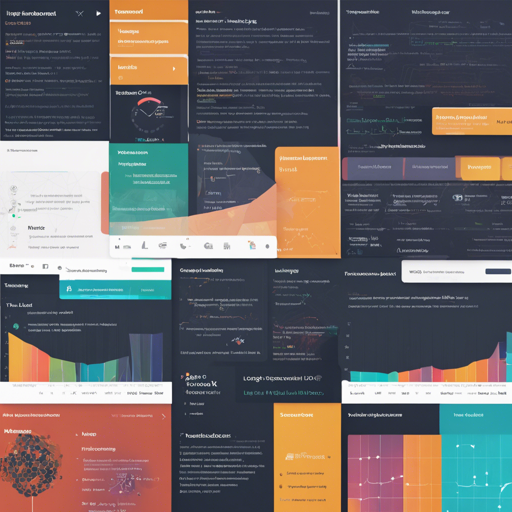TensorBoardX is a powerful tool that allows you to record various metrics during your machine learning experiments. This blog will guide you through the process of utilizing TensorBoardX by providing step-by-step instructions, simple examples, and troubleshooting tips.
Getting Started with TensorBoardX
Before diving into the code, you need to install the TensorBoardX library. Here’s how you can do it:
- Open your terminal.
- Run the following command to install TensorBoardX via pip:
pip install tensorboardXpip install git+https://github.com/lanpa/tensorboardXpip install crc32cadd_audio() function with enhanced performance, install soundfile:pip install soundfileWriting TensorBoard Events
The following is a sample script that demonstrates how to log various types of data (such as scalars, images, and audio) using TensorBoardX. Think of TensorBoardX as your art studio, where every brushstroke (data point) contributes to the final masterpiece (your machine learning model’s performance).
import torch
import torchvision.utils as vutils
import numpy as np
import torchvision.models as models
from torchvision import datasets
from tensorboardX import SummaryWriter
resnet18 = models.resnet18(False)
writer = SummaryWriter()
sample_rate = 44100
freqs = [262, 294, 330, 349, 392, 440, 440, 440, 440, 440, 440]
for n_iter in range(100):
dummy_s1 = torch.rand(1)
dummy_s2 = torch.rand(1)
# Grouped data logging
writer.add_scalar('data/scalar1', dummy_s1[0], n_iter)
writer.add_scalar('data/scalar2', dummy_s2[0], n_iter)
writer.add_scalars('data/scalar_group', {
'xsin(x)': n_iter * np.sin(n_iter),
'xcos(x)': n_iter * np.cos(n_iter),
'arctan(x)': np.arctan(n_iter)
}, n_iter)
dummy_img = torch.rand(32, 3, 64, 64)
if n_iter % 10 == 0:
x = vutils.make_grid(dummy_img, normalize=True, scale_each=True)
writer.add_image('Image', x, n_iter)
# Generate dummy audio
dummy_audio = torch.zeros(sample_rate * 2)
for i in range(x.size(0)):
dummy_audio[i] = np.cos(freqs[n_iter // 10] * np.pi * float(i) / sample_rate)
writer.add_audio('myAudio', dummy_audio, n_iter, sample_rate=sample_rate)
writer.add_text('Text', f'text logged at step: {n_iter}', n_iter)
for name, param in resnet18.named_parameters():
writer.add_histogram(name, param.clone().cpu().data.numpy(), n_iter)
writer.add_pr_curve('xoxo', np.random.randint(2, size=100), np.random.rand(100), n_iter)
dataset = datasets.MNIST('mnist', train=False, download=True)
images = dataset.test_data[:100].float()
label = dataset.test_labels[:100]
features = images.view(100, 784)
writer.add_embedding(features, metadata=label, label_img=images.unsqueeze(1))
# Export scalar data for external processing
writer.export_scalars_to_json('all_scalars.json')
writer.close()Explaining the Code
The provided code simulates the process of logging various metrics to TensorBoard, much like an artist compiling sketches before creating a grand painting. The ‘writer’ acts as your canvas:
- Creating a writer: Think of it as your blank canvas.
- Logging Scalars: These are simple measurements, like noting down height and width on a sticky note as you sketch.
- Logging Images: You create beautiful images (dummy images) that contribute to the overall quality of your work.
- Logging Audio: Each audio wave imitates the sounds made in a gallery, adding another dimension to your audience’s experience.
- Exporting Data: Finally, you save your masterpiece for others to admire, ensuring that your processes are preserved.
Running the Experiment
Once you have logged your data, you can visualize it. To do this:
- Open a terminal and navigate to your project folder.
- Run TensorBoard using the following command:
tensorboard --logdir runsTroubleshooting
If you encounter issues while using TensorBoardX, consider the following tips:
- Version Compatibility: Ensure you are using compatible versions of PyTorch, TensorBoard, and TensorBoardX. Refer to the documentation for guidance.
- No Data Appearing: Check the
logdirspecified in your TensorBoard command matches the one used in yourSummaryWriter. - Installation Issues: If you face problems during installation, try reinstalling using pip or building from source.
For more insights, updates, or to collaborate on AI development projects, stay connected with fxis.ai.
Conclusion
Using TensorBoardX allows you to efficiently track progress in your experiments and visualize metrics in a user-friendly manner. By following the steps in this guide, you are on your way to creating detailed, insightful visualizations that will enhance your machine learning workflow.
At fxis.ai, we believe that such advancements are crucial for the future of AI, as they enable more comprehensive and effective solutions. Our team is continually exploring new methodologies to push the envelope in artificial intelligence, ensuring that our clients benefit from the latest technological innovations.

